Two years into the pandemic and with fewer restrictions on mobility, quite a number of Catholics have re-started their Visita Iglesia, the act of visiting churches during Holy Week, practiced since Spanish colonial times.
Personally, undertaking the Visita is an opportune time for our family to again thank the Lord for the care and blessings He continuously bestows on us, most especially since I contracted COVID-19 during last year’s Holy Week.
This year, Holy Thursday’s observance was marked with the visit to nine parish churches along the Province of Rizal’s cities and towns that border the northern coast of Laguna de Bay.
• Diocesan Shrine and Parish of Our Lady of Light. We started our spiritual journey with a visit to nearby Cainta. As we entered the parish grounds, we were met by the statue of Our Lady carrying the Infant Jesus, surrounded by angels, before a lighthouse. As we walked to the entrance of the church located on the western side transept, we noticed two bells dating back to 1835 and 1847, illustrative of its long history. We were awed by the beauty of the Sanctuary as we started with the Stations of the Cross, and reflected as we looked at the life of the Blessed Mother depicted in the painted ceiling.
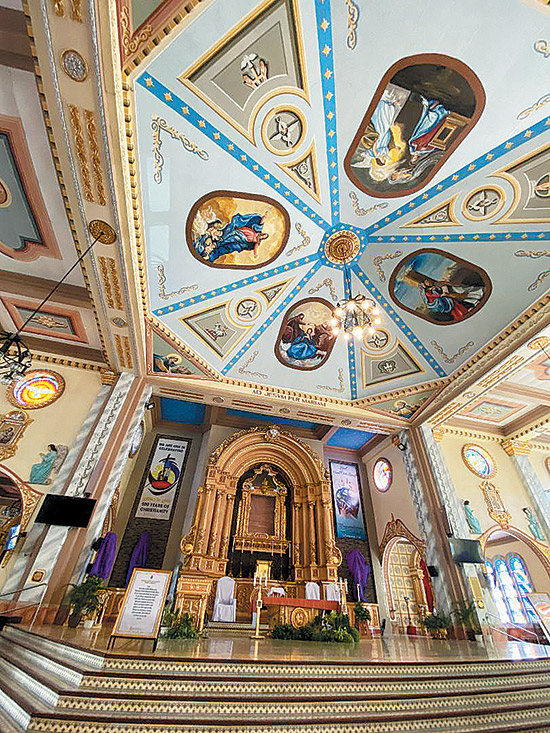
• Parish of St. John the Baptist. Driving southeast, we reached the Municipality of Taytay and entered the parish compound driveway lined with stone-figurines of the Lord and saints, and a statue of a man kneeling before the Cross and a priest, beside the image of the Santo Niño. We were told that it was in this parish that an altar boy once served, eventually joined a Jesuit missionary to the Marianas, and would meet martyrdom – he was San Pedro Calungsod. The modern church has an impressive five-level bell tower, richly-designed retablos filled with statues of Jesus Christ, Mother Mary, John the Baptist and a host of venerated saints.
• Diocesan Shrine and Parish of Saint Clement. We continued our visit to Angono, Rizal. Located near the mouth of the Manggahan Floodway and adjoining Angono River lies the church. Angono is home to National Artists, and the town’s artistic influences can be seen in the way the retablos were conceived and skillfully craved, as well as the end-pews showing bamboos and floral motifs, an image of the Pope wearing a tiara and holding his pastoral staff, and papal insignia with an anchored cross–common symbols of Saint-Pope Clement the First, early successor to St. Peter and patron saint of metal workers and blacksmiths. On the sides of its perimeter fence are numerous works of Filipino muralist Carlos ‘Botong’ Francisco.
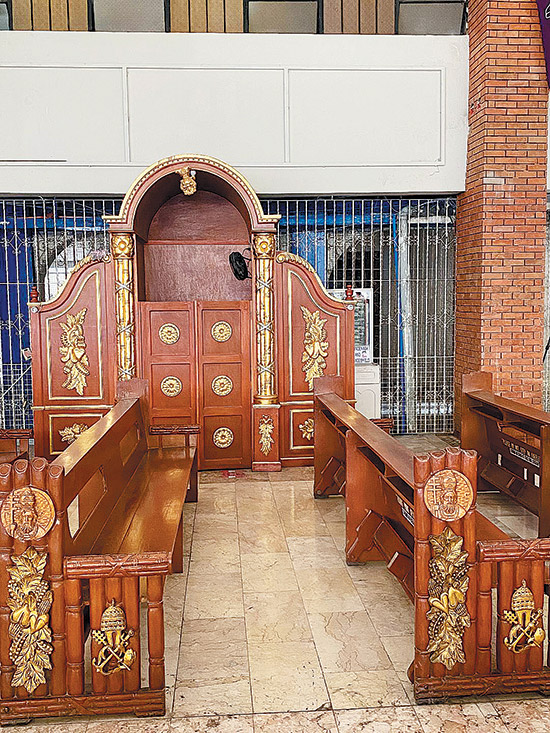
• Sta. Ursula Parish. Driving further along the lake’s northern coast, we reached the town of Binangonan where the church is. Similar to many other religious edifices, it was constructed with an abode, has a triangular pediment façade and attached to a kampanaryo or bell tower. Once we entered the church, a striking contrast greeted us. Beyond the modern three-part retablos, very noticeable was the wooden trusses under the corrugated roof, exposed for the parishioners to view and appreciate. The different Stations of the Cross flanked the large windows and arch-shaped side doors along the left and right sides of the nave.
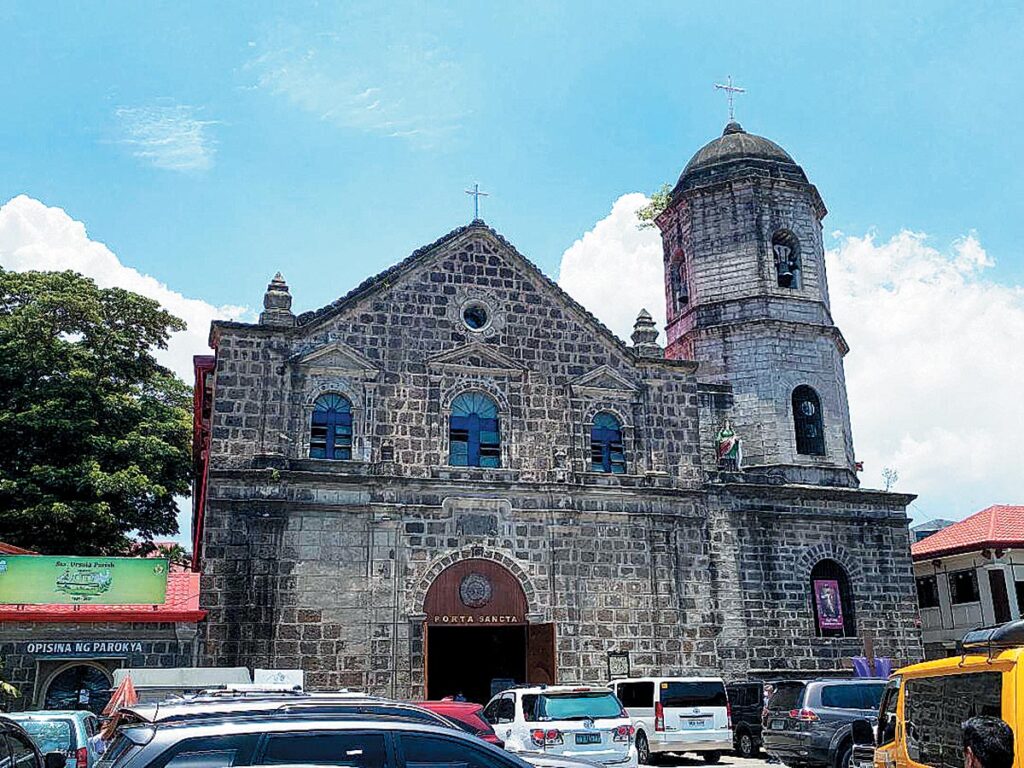
• Diocesan Shrine and Parish of Our Lady of the Most Holy Rosary. Driving approximately seven kilometers, we reached the church opposite the Municipal Hall of Cardona. This cruciform-plan church has a simple but golden-colored retablo and cove-lighted ceiling in the shape of a cross. To the church’s left is an imposing Virgin Mary carrying the baby Jesus, surrounded by white and blue-colored beads of the Rosary affixed to a large iconic crucifix.
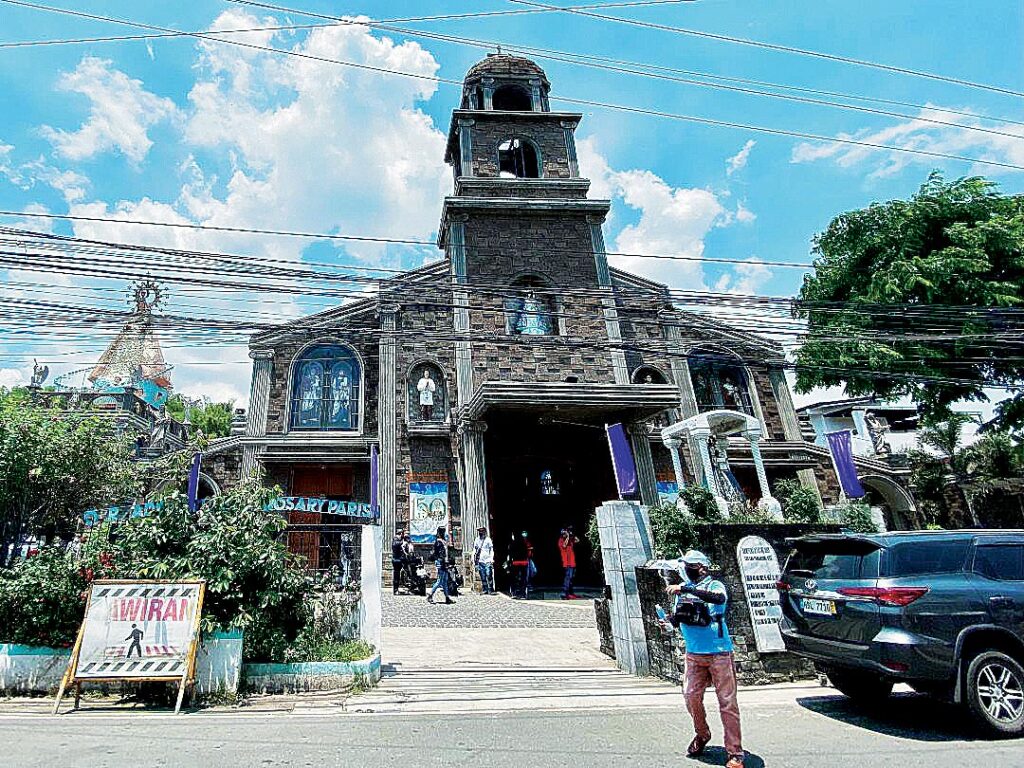
• St. Jerome Parish. Crossing over the plains approximately five kilometers further, we arrived at the neo-baroque style church in the town of Morong. Among the most impressive church façade and belfry combined, its exquisite design contrasts the simple Sanctuary, before painted images of the evangelists on pendentives beneath an octagonal shaped dome where the nave and transept crossed.
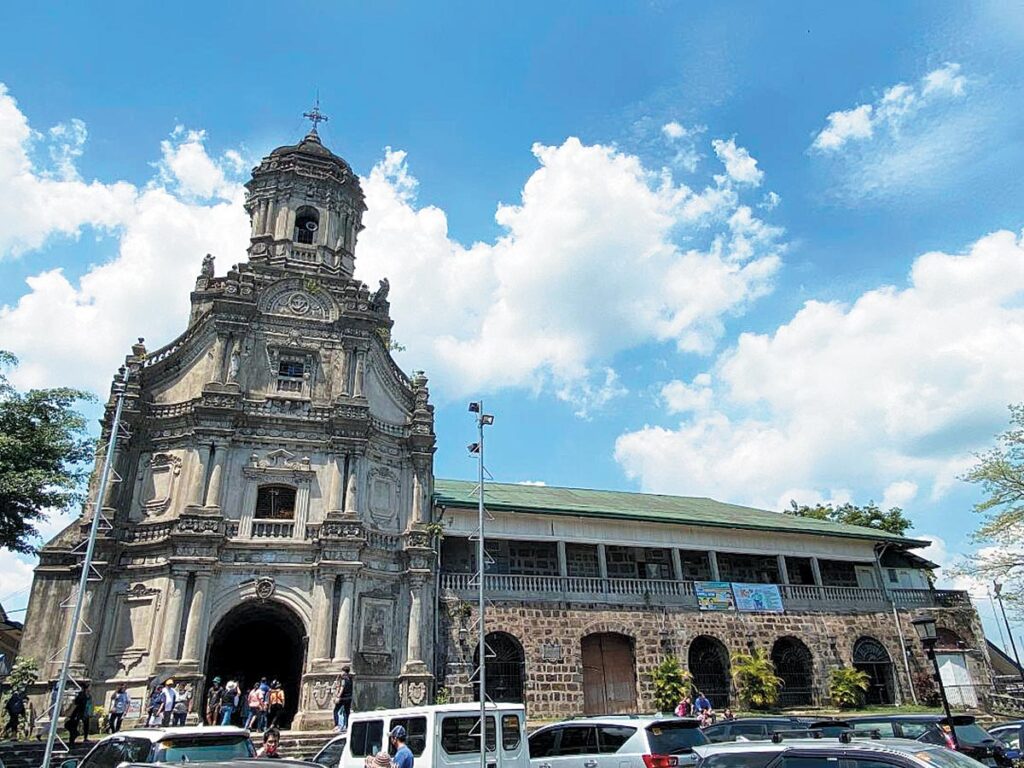
• Diocesan Shrine and Parish of St. Joseph. After Morong, we proceeded to the town of Baras. Named in honor of the husband of our Beloved Mother, a huge yellow-colored “336” sign located to the right of the church’s main door reminded parishioners and visitors alike of how long the church had been on its present site. As one enters the stone masonry-built church decorated with balustrades atop the pediment and belfry, we were immediately attracted to the multi-level retablos and open-trusses of the church, similar to that in Binangonan. Both sides of the interior front walls are also flanked with beautifully decorated retablos and a pulpito or elevated stand attached to the wall.
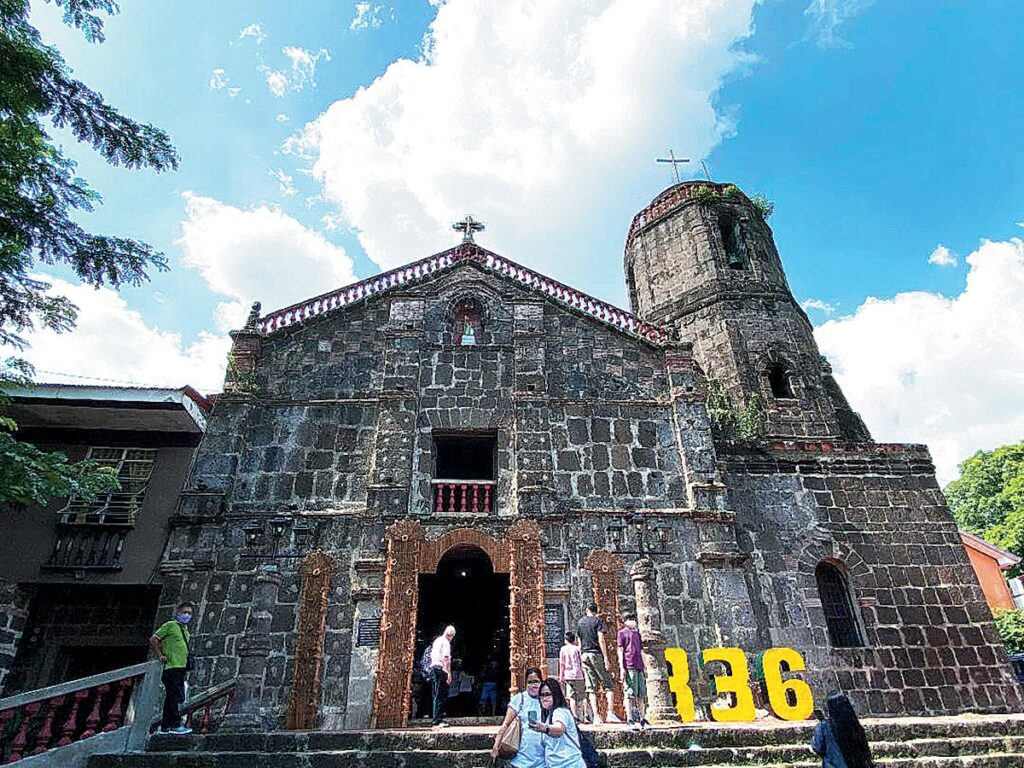
• San Ildefonso de Toledo Parish. Arriving in the heart of Tanay, we were greeted by its church, declared a National Cultural Treasure by the National Commission for Culture and the Arts in 2001. The present façade with triangular pediment and four level bell tower was completed in 1783 as indicated in the historical marker, although the town and parish evolved since 1606 as shown in the huge tarpaulin announcing its 415th foundation anniversary. In addition to the retablo mayor (main), two retablo minores flanked each side of the transepts, a staircase leading to the pulpito can be seen on the eastern lateral wall. Moreover, the Stations of the Cross feature native-colored characters depicting the Passion of Christ, enclosed in glass for protection.
• Diocesan Shrine and Parish of Saint Mary Magdalene Church. Our Visita Iglesia ended in the wind farm town of Pililla where the main church is located. After entering the gateway arch of the compound, we were met by the abode-made edifice where the gentle saint holding a cross of the crucified Christ affixed on the pediment above the portico-entrance. Despite the noticeable difference between the lower and upper portions of the church’s exterior and bell tower, we were able to see the grand retablo, ornately decorated pulpito and opulently-shaped aranya or chandelier hanging from the painted wooden ceiling depicting the Lord’s life as well as images of the apostles and saints like that of San Lorenzo Ruiz and San Pedro Calungsod.
Not only was the visit meant to renew our faith as we meditate on the Lord’s Passion but it was also a way to appreciate how our heritage churches were designed, preserved, restored and how they withstood the test of time.
(For more information on these churches, check out the various parishes’ websites and corresponding Wikipedia pages)
* * *
Henry L. Yap is an architect, environmental planner, real estate practitioner and former professorial lecturer.
